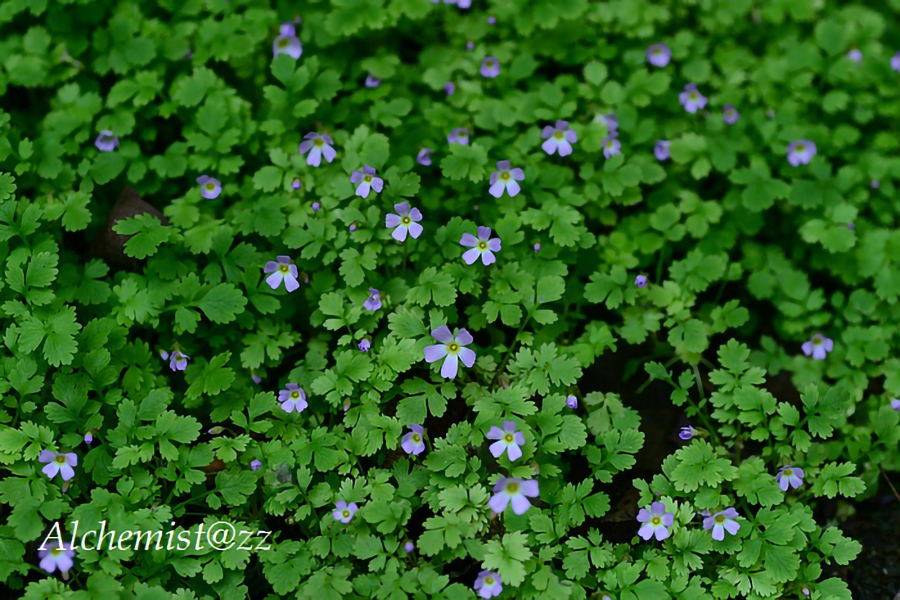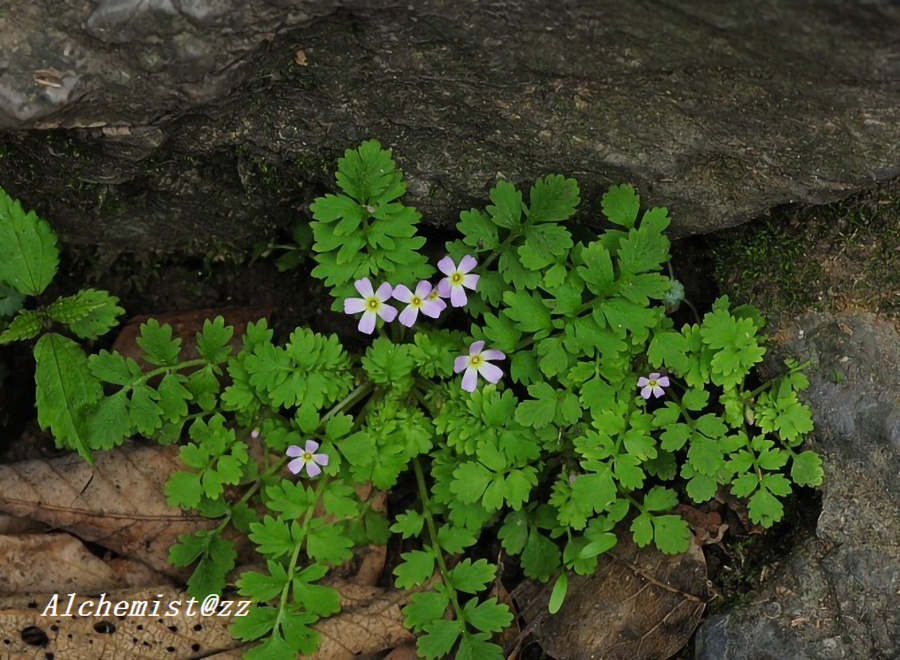- Scientific Name: Primula cicutariifolia Pax
- Ref: Jahresber. Schles. Ges. Vaterl. Cult. 93: Abt. 2, 1. 1915.
- Chinese Common Name: 毛茛叶报春 máogèn∙yè bàochūn, 堇叶报春 jǐnyè bàochūn
- Family: Primulaceae
- Genus: Primula
- Distribution: On wet moss-covered rocks in woodlands and along streamsides; 500–1000 m. S Anhui, E Hubei, Hunan, N Jiangxi, N Zhejiang.
- Photo: Feilai Peak, Hangzhou, Zhejiang
Herbs perennial, delicate, glabrous, with a tap root and numerous fibrous roots. Leaves dimorphic. Outer leaves withered at anthesis, long petiolate, ovate, 3--8 X 3--7 mm, margin entire to dentate. Petiole of inner leaves 0.6--2 cm; leaf blade elliptic to oblong, 1.5--10 cm; pinnatisect; pinnae (1 or)2--6 pairs, proximal pair very small, gradually increasing upward, 3--13 X 2.5--12 mm, with 2--4 teeth on each side, terminal pair larger, elliptic to broadly ovate, usually 3-lobed. Scapes 1--5 cm; umbel solitary, (1- or)2--4-flowered; bracts linear, 1.5--3 mm. Pedicel 0.7--3 cm, sparingly glandular. Flowers homostylous or heterostylous. Calyx campanulate, 3--4.5 mm, ± glandular, parted below middle into lanceolate lobes. Corolla pink or pale lilac; tube 4.5--6.5 mm; limb 4--8 mm wide; lobes cuneate-oblong, apex subtruncate or slightly emarginate. Pin flowers unknown. Thrum flowers: stamens near apex of corolla tube; style ca. 1/2 as long as tube. Homostylous flowers with stamens and style near apex of corolla tube. Capsule subglobose, ca. 2.5 mm in diam. Fl. Mar-Apr, fr. Apr-May. (Flora of China)


